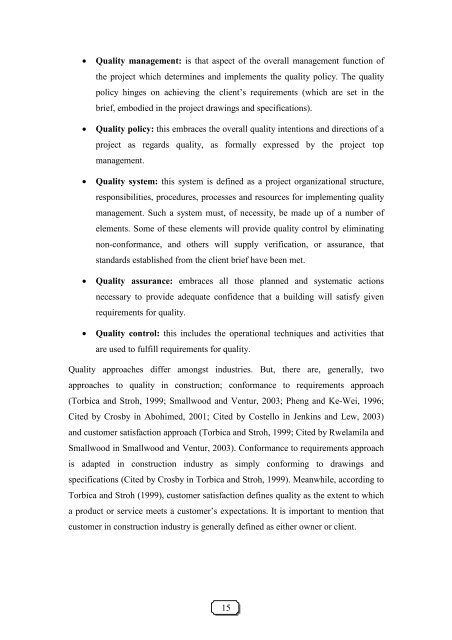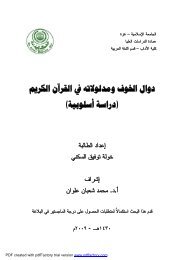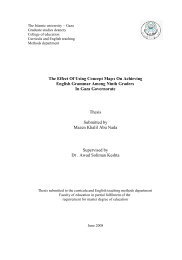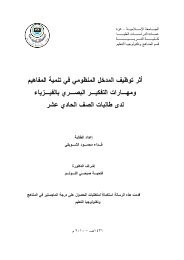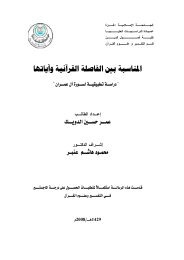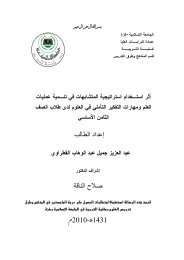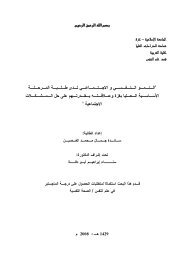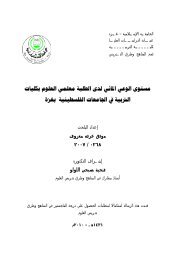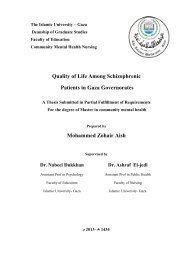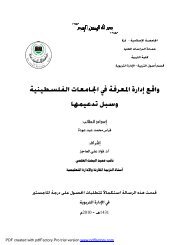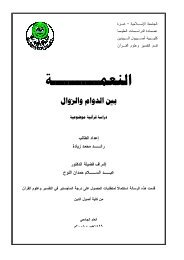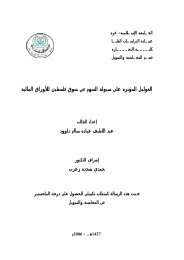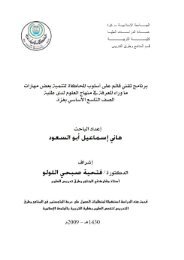developing a model for integrating safety, quality and productivity in ...
developing a model for integrating safety, quality and productivity in ...
developing a model for integrating safety, quality and productivity in ...
Create successful ePaper yourself
Turn your PDF publications into a flip-book with our unique Google optimized e-Paper software.
• Quality management: is that aspect of the overall management function ofthe project which determ<strong>in</strong>es <strong>and</strong> implements the <strong>quality</strong> policy. The <strong>quality</strong>policy h<strong>in</strong>ges on achiev<strong>in</strong>g the client’s requirements (which are set <strong>in</strong> thebrief, embodied <strong>in</strong> the project draw<strong>in</strong>gs <strong>and</strong> specifications).• Quality policy: this embraces the overall <strong>quality</strong> <strong>in</strong>tentions <strong>and</strong> directions of aproject as regards <strong>quality</strong>, as <strong>for</strong>mally expressed by the project topmanagement.• Quality system: this system is def<strong>in</strong>ed as a project organizational structure,responsibilities, procedures, processes <strong>and</strong> resources <strong>for</strong> implement<strong>in</strong>g <strong>quality</strong>management. Such a system must, of necessity, be made up of a number ofelements. Some of these elements will provide <strong>quality</strong> control by elim<strong>in</strong>at<strong>in</strong>gnon-con<strong>for</strong>mance, <strong>and</strong> others will supply verification, or assurance, thatst<strong>and</strong>ards established from the client brief have been met.• Quality assurance: embraces all those planned <strong>and</strong> systematic actionsnecessary to provide adequate confidence that a build<strong>in</strong>g will satisfy givenrequirements <strong>for</strong> <strong>quality</strong>.• Quality control: this <strong>in</strong>cludes the operational techniques <strong>and</strong> activities thatare used to fulfill requirements <strong>for</strong> <strong>quality</strong>.Quality approaches differ amongst <strong>in</strong>dustries. But, there are, generally, twoapproaches to <strong>quality</strong> <strong>in</strong> construction; con<strong>for</strong>mance to requirements approach(Torbica <strong>and</strong> Stroh, 1999; Smallwood <strong>and</strong> Ventur, 2003; Pheng <strong>and</strong> Ke-Wei, 1996;Cited by Crosby <strong>in</strong> Abohimed, 2001; Cited by Costello <strong>in</strong> Jenk<strong>in</strong>s <strong>and</strong> Lew, 2003)<strong>and</strong> customer satisfaction approach (Torbica <strong>and</strong> Stroh, 1999; Cited by Rwelamila <strong>and</strong>Smallwood <strong>in</strong> Smallwood <strong>and</strong> Ventur, 2003). Con<strong>for</strong>mance to requirements approachis adapted <strong>in</strong> construction <strong>in</strong>dustry as simply con<strong>for</strong>m<strong>in</strong>g to draw<strong>in</strong>gs <strong>and</strong>specifications (Cited by Crosby <strong>in</strong> Torbica <strong>and</strong> Stroh, 1999). Meanwhile, accord<strong>in</strong>g toTorbica <strong>and</strong> Stroh (1999), customer satisfaction def<strong>in</strong>es <strong>quality</strong> as the extent to whicha product or service meets a customer’s expectations. It is important to mention thatcustomer <strong>in</strong> construction <strong>in</strong>dustry is generally def<strong>in</strong>ed as either owner or client.15


